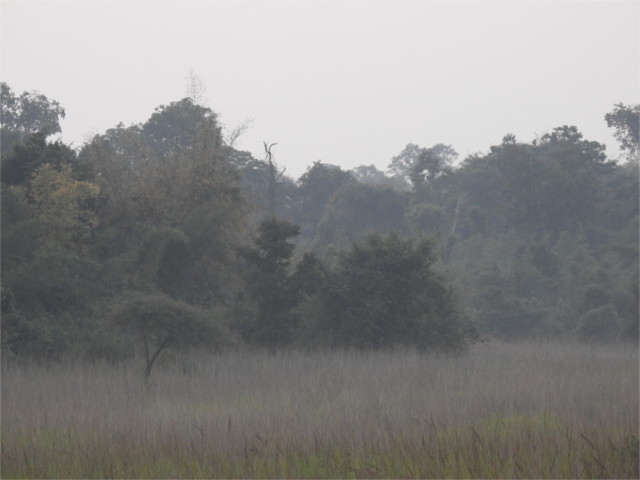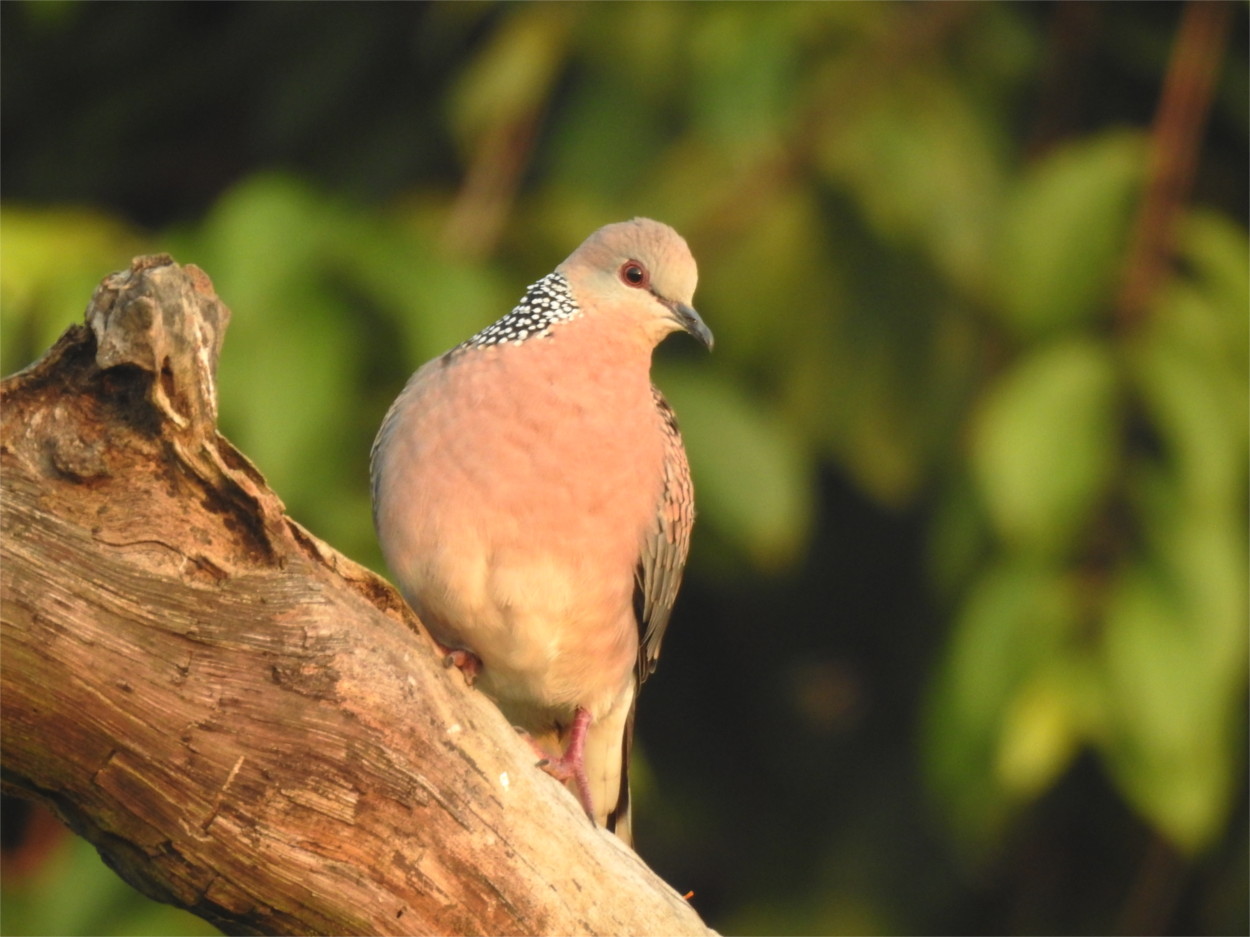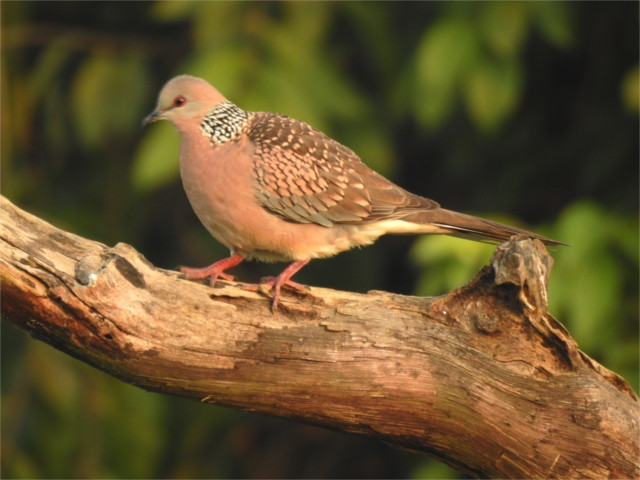During the pandemic national parks were closed for more than a year. When we could finally get to one at the end of October 2021, The Family said, “Two years without a tiger sighting! I hope we see one now.” She wasn’t amused when I pointed out the butterfly called glassy tiger flitting from flower to flower in front of us.


Half an hour after we’d entered the park, we were driving along a deserted path when a pack of dhole (Cuon alpinus, wild dogs) came loping down it and halted our jeep. I’d never got a good photo of one, and now there were twenty, including cubs, happily playing in front of us, and enjoying each others’ company. I don’t think I’ll ever see that again. Perhaps it was the long absence of humans which had made them fearless. We spent a half hour or more watching a sight rarer than tigers before they let us move.
We moved on from a dirt path winding between trees, to an open meadow. I love the way the landscape changes in these jungles; you move from the dark, shut in, jungle to open meadows in the blink of an eye. In the distance I could see chital grazing; an egret on the back of one was like a little pennant bobbing up and down. I took the photo of a blade of grass that you see in the featured photo.
The path led on into the jungle again and we left the chital behind us for a while. But then they must have caught a whiff of a predator. There was an alarm call, and the herd came crashing through the jungle. A male stopped in a clear patch to assess us for danger, the light perfect for a shot of its panic stricken gaze. But chital (Axis axis, spotted deer) are notorious for being easy to spook. There was no sign of a tiger. Normally you would wait for a monkey or a sambar to verify that alarm call. There was none.
We lingered near that clearing. There was a trickle of water and that is always a good place to wait to see what comes along. A bunch of babblers first, and then some bulbuls (Pycnonotus cafer) came for a drink. I tried to get a photo of the droplets of water flung around as they took a dip in the stream and then shook themselves dry.




On, then, to a place where the jungle was less thick. Two other jeeps were waiting here. “Alarm call,” one of the drivers told us, and we joined them in a silent vigil as the horizon slid up towards the sun. We were standing under a growth of teak (Tectona grandis). I admired the sunlight through the large leaves, the texture of the peeling bark, the play of light on grass. In normal life I would never spend ninety minutes sitting so still, my mind only in the moment. Whether or not you see a tiger in the jungle, you see the world in such detail that you never forget it later. These are the times that I love.
Perhaps there was no tiger there. Or maybe it had hunkered down and decided to wait us out. Time is never on our side. The light was beginning to go. In an hour we would not be able to see the tiger even if it stood up and walked past us. I took a photo of the field of silver cockscomb (Celosia argentea) near us, spider webs threaded through the field as the predator of the small world waited as patiently for its prey as a tiger.
Just before we moved on, a sambar buck (Rusa unicolor) came through the woods, browsing. It caught a whiff of us in the breeze, and stopped to look at us. Deer are always alert, but unlike a chital, a sambar will not be spooked by its own shadow. It stood still enough that I could take a photo of it even in this failing light.
As we moved away, there was only one other large animal that we saw. That’s the gaur (Bos gaurus, Indian bison) that you see in the photo above. I have a bone to pick with them. They are diurnal, and they could easily overturn a jeep if they wanted to. Why then do they appear only in bad light? When we entered the jungle we’d read a large friendly notice put up by the forest department, “Don’t enter the jungle in a search of a tiger. If you don’t see one you’ll go back and say you saw nothing.” This was a good day seeing nothing, I told The Family.

































